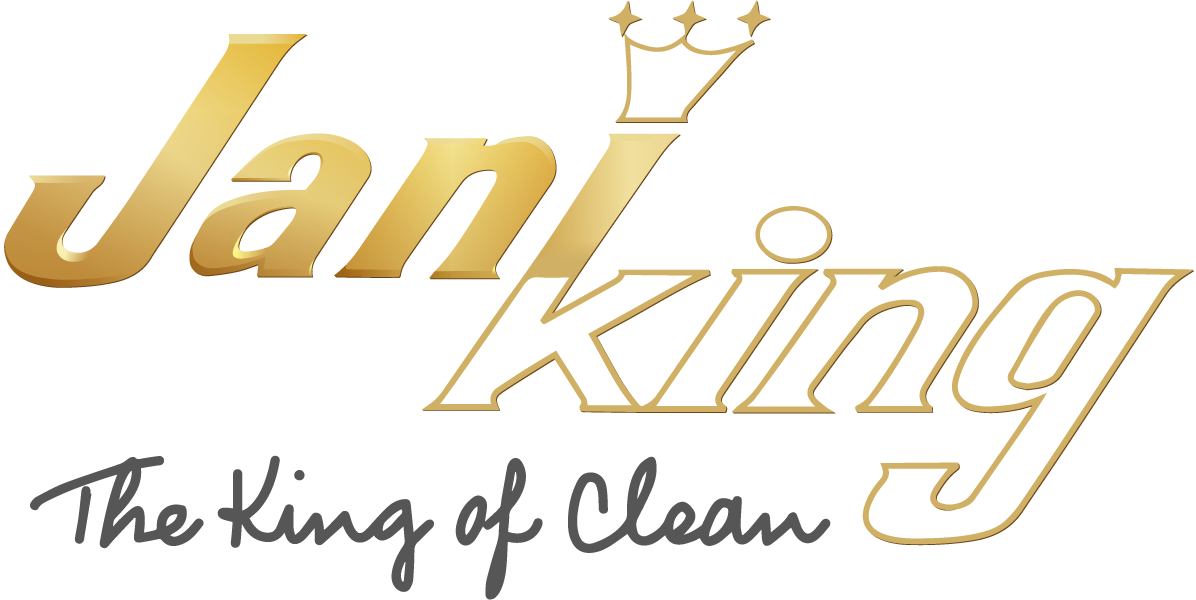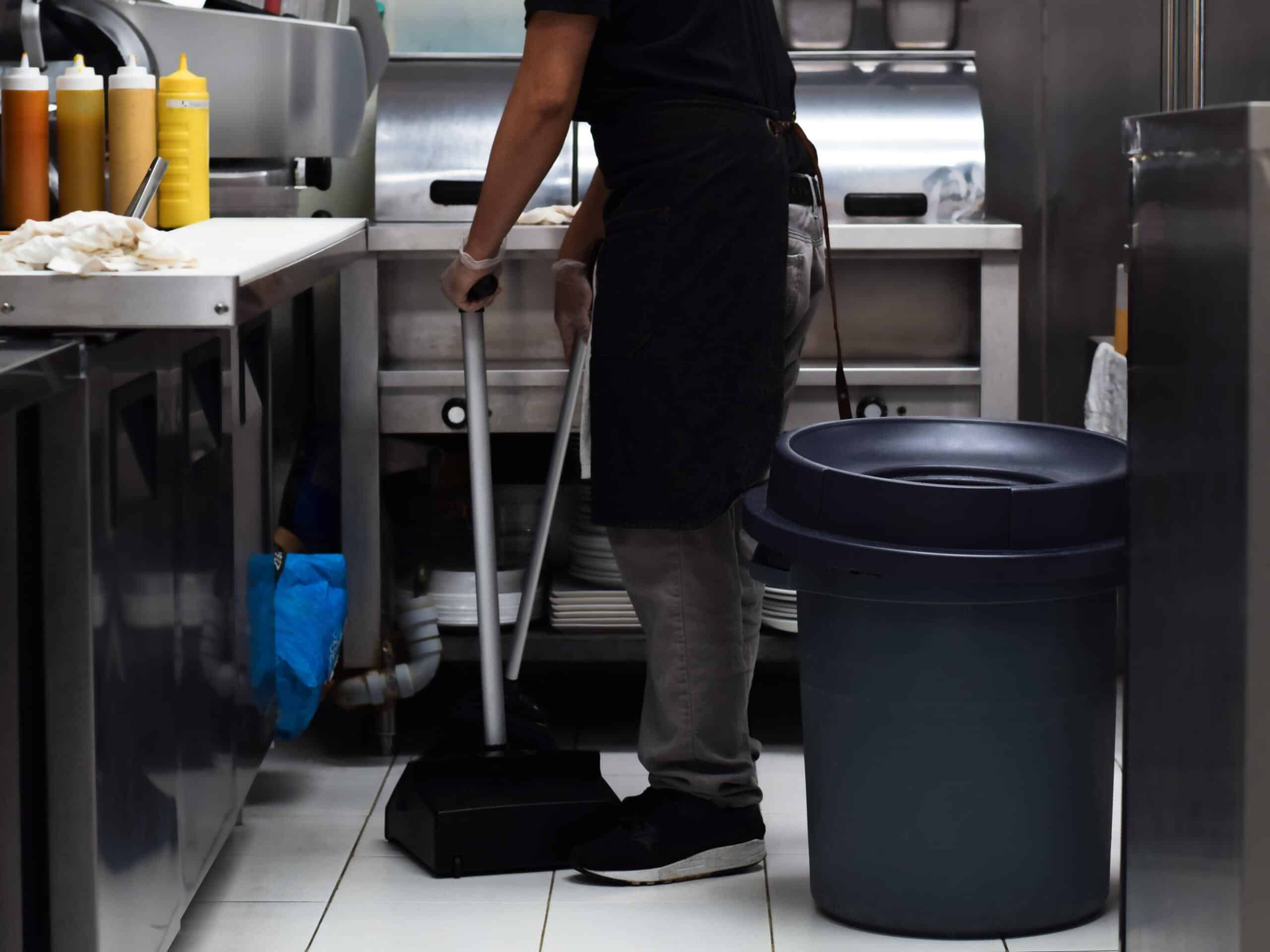Table of Contents
The key takeaways
- Safe cleaning practices directly support the health, safety and productivity of your workplace.
- Common hazards include chemical exposure, slips and falls, ergonomic strain, electrical risks and biological dangers.
- Proactive strategies like training, PPE use, safe chemical handling and ergonomic methods reduce workplace cleaning risks.
- Complying with Australian WHS laws helps avoid legal penalties and protects employees from harm.
- Partnering with professional services like Jani-King ensures expert management of cleaning hazards and a safer work environment.
The importance of safe cleaning practices in the workplace
A clean workplace isn’t just about appearances; it plays a direct role in supporting the health, safety and productivity of your team. From reducing the spread of illness to creating a more pleasant environment, regular cleaning is essential to any well-run business.
However, if cleaning isn’t carried out correctly, it can also create an array of safety risks. Slippery surfaces, improper use of cleaning chemicals and obstructed walkways are just some of the hazards that can arise during day-to-day tasks. In this blog, we’ll outline some of the most common cleaning-related risks in commercial settings and share practical ways to manage them, because at Jani-King, we know a clean site should also be a safe one. With the right systems in place, you can maintain a spotless workplace while protecting the well-being of your staff and visitors.
Understanding workplace cleaning hazards
Understanding workplace cleaning hazards starts with recognising what they are. Cleaning hazards include any conditions or situations during cleaning tasks that could cause injury or harm, such as wet floors, exposed cables, airborne dust or improper use of cleaning products. These risks not only put employee safety at risk but can also interrupt daily business operations through accidents, illness or unexpected downtime.
Recognising these hazards early and addressing them promptly is crucial. Taking a proactive approach to managing cleaning risks helps protect your team, ensures smoother operations and contributes to a safer, healthier environment for everyone involved.
Common cleaning hazards in the workplace
Chemical exposure
Certain chemicals like bleach, ammonia and disinfectants can pose health risks if handled incorrectly. Exposure may cause skin irritation, breathing difficulties or allergic reactions. Safe use and storage are essential for incident prevention.
Slips, trips and falls
Wet floors, spills and misplaced equipment are some of the most common causes of workplace accidents, particularly for cleaning workers in high-risk environments like industrial sites. These incidents can lead to serious injuries like sprains, fractures or even head injuries. In fact, Safe Work Australia’s 2024 Key Work Health and Safety Statistics Report recorded 30,300 incidents of slips, trips and falls, accounting for 21.8% of all serious workplace injury claims.
Ergonomic risks
In the cleaning industry, many tasks are classified as hazardous manual tasks due to the physical effort they require. Repetitive movements, awkward postures and heavy lifting can lead to musculoskeletal disorders such as lower back pain, tendonitis and carpal tunnel syndrome.
Electrical hazards
Just like any other industry, the use of powered tools such as vacuum cleaners, floor polishers and specialised equipment creates inherent risks. When used near wet areas or on damp surfaces, there’s a real risk of electric shock. Faulty cords, damaged plugs or incorrect use can also cause serious and fatal injuries.
Biological hazards
Biohazards, including bloodborne pathogens, mould and other risks, are common in medical and industrial cleaning settings. It has been estimated that in 2022, more than 550,000 deaths worldwide were linked to biological hazards, including infectious diseases. That’s why safely handling waste and contaminated materials is essential to protect the health of everyone in the workplace.
Strategies to mitigate cleaning hazards
Proper training and education
Providing thorough training is necessary to help cleaners understand the risks involved and the safest ways to perform their tasks. Regular refresher courses or workshops ensure safety protocols stay fresh in everyone’s mind and that staff remain aware of any new hazards or updated procedures.
Use of personal protective equipment (PPE)
For most cleaning tasks, gloves, goggles, masks and non-slip shoes aren’t just recommended, they’re required. It’s important that workers not only wear the right PPE but also know how to maintain and replace it when necessary. Proper PPE use is a simple but effective way to reduce exposure to potentially harmful chemicals and physical injuries.
Safe handling and storage of chemicals
Cleaners should always follow instructions on product labels and Safety Data Sheets, using chemicals in the right concentrations and ensuring adequate ventilation during use. Storing hazardous substances safely, out of reach and away from heat sources, is necessary to prevent dangerous reactions or spills. Safe Work Australia’s Hazardous Chemicals Code of Practice offers clear guidance to support these measures and abide by relevant safety standards.
Implementing ergonomic practices
Using suitable cleaning methods is essential to reduce physical strain, particularly when working in confined spaces where movement can be limited. Applying proper lifting techniques and using equipment like trolleys, adjustable handles, or extendable tools can help minimise the risk of injury and make tasks more manageable. It’s also important to rotate cleaning tasks among staff to prevent repetitive motion injuries and overuse of specific muscle groups.
Maintaining equipment and facilities
Keeping cleaning equipment in good shape is a simple but important way to support workplace safety. When tools are well maintained, it cuts down on common hazards like equipment breaking or causing accidents. On top of that, making sure work areas stay tidy helps prevent slips, trips and falls, keeping everyone safer. Regular checks and upkeep might seem small, but they make a big difference in creating a safer workplace for all.
Legal and regulatory considerations in Australia
Workplace Health and Safety (WHS) laws in Australia differ across States and Territories, but all require PCBUs (Persons Conducting a Business or Undertaking) to provide a safe environment for staff, visitors, contractors and the public. This includes following the required safety guidelines, implementing control measures and working closely with contractors, staff and representatives to manage risks effectively.
Employers are responsible for identifying hazards, putting control measures in place and providing training to ensure everyone understands their role in workplace safety. Health and safety representatives also help by representing workers’ interests and supporting safe practices.
For more detailed information, Safe Work Australia offers useful resources and outlines enforcement procedures here: Safe Work Australia Enforcement Procedures.
Breaching a safety standard
Failing to meet these responsibilities can lead to fines, legal action and damage to a business’s reputation. For example, in Queensland, non-compliance with health and safety or electrical safety duties can result in prosecution in the Magistrates Court. Penalties may include fines of up to $500,000 for corporations, up to $100,000 for individuals acting as PCBUs or officers and up to $50,000 for other individuals, such as contract workers. Following these rules protects everyone from both financial and personal consequences.
The role of professional cleaning services
Bringing in professional cleaners can really help reduce the risks linked to hazardous materials and tricky cleaning tasks. Experienced cleaning staff know how to handle these hazards safely, which means everyone on site stays protected.
These trained cleaners follow clear safety guidelines and use the right methods to keep workplaces safe and compliant with regulations. Working with a trusted cleaning company means potential hazards are managed well, giving you peace of mind.
When choosing a provider, check for relevant certifications such as ISO 9001 for Quality Management, ISO 45001 for Occupational Health and Safety and ISO 14001 for Environmental Management. These show you’re hiring a company that takes safety seriously and values doing the job properly.
Jani-King’s approach to workplace health and safety
At Jani-King, maintaining a healthy and safe work environment is a top priority. Over nearly a decade, we have developed robust safety procedures that protect both our cleaners and clients.
Our safety approach includes developing safe work systems, regular training and ongoing risk assessment to reduce potential incidents. To support franchisees, we provide an industry-specific online safety management system that helps meet legislative obligations through regular compliance reminders, inspections and contractor management. As Suzi Dileo, Manager of Optimisation & Training at Jani-King Australia, explains:
“Having been involved with the Jani-King safety system for almost 10 years now, I’ve seen that having robust safety procedures for cleaning is critical to our cleaners and our clients. This gives them the peace of mind that safety is our priority. Since we have built our own customised online safety system, we’ve seen an increase in use of the system, including reporting near misses, which really helps us to keep improving safety for everyone on an ongoing basis. Safety is something that is ever evolving as situations, sites and cleaning practices and tools continue to change.”
Creating a culture of safety in the workplace
A strong culture of safety starts with simple but powerful actions that protect everyone on the job. Having accessible first aid kits and limiting the use of hazardous chemicals directly reduces risks and protects workers from harm. By building trust and reliable communication models, employees are encouraged to report hazards and actively participate in safety initiatives, building a team that is vigilant and engaged.
It’s important to note that the commitment to keeping workers safe starts at the top of an organisation. When leaders consistently demonstrate and enforce safe practices, they set a clear standard that safety is non-negotiable. By making safety part of everyday work life, organisations create a culture of trust and shared responsibility that benefits everyone.
Keep your workplace safe and compliant with Jani-King
Managing cleaning hazards is about more than compliance—it’s about looking after the people who keep your workplace running. By investing in safety training, using proper equipment and reviewing procedures regularly, businesses create safer environments and avoid costly disruptions.
If you’re considering outsourcing, Jani-King is a proven partner. With experienced teams and a strong commitment to safe, reliable service, Jani-King has helped reduce cleaning hazards in workplace environments across offices, warehouses, hospitality venues and schools for over 30 years.


